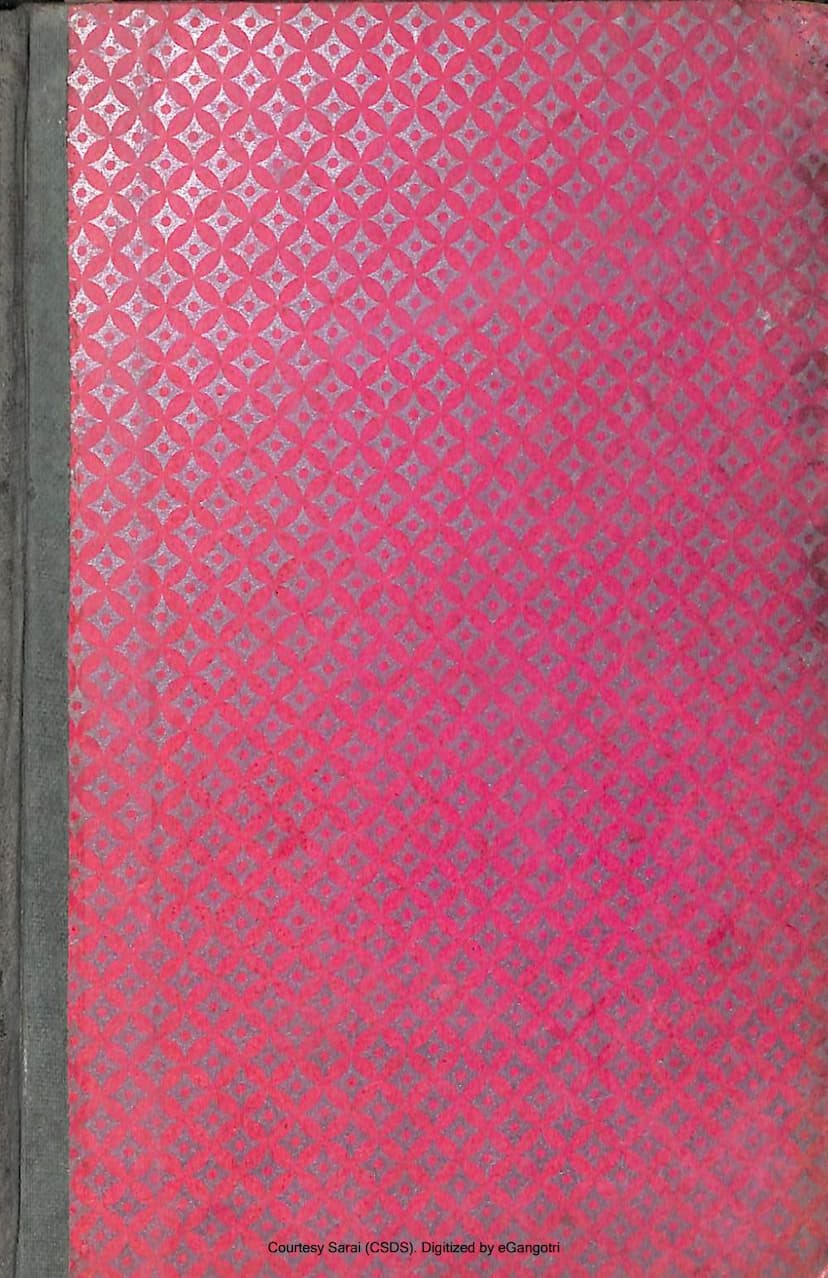Jain Itihas Urdu
Added to library: September 2, 2025

Summary
This comprehensive summary provides an overview of the Jain historical text "Jain Itihas Urdu" by Pandit Prabhu Dayal Jain, published by Pandit Prabhu Dayal Jain. The book, digitized by eGangotri and made available through Sarai (CSDS), is dedicated to Thomas Gordon Walker Esq., C.S., Commissioner & Superintendent, Delhi Division, as a gesture of deep respect.
The text delves into Jain history, philosophy, and prominent figures, presented in Urdu. It meticulously traces the lineage of Jain Tirthankaras and the cyclical nature of time according to Jain cosmology, discussing periods of progress (Utsarpini) and decline (Avasarpini).
Key aspects covered include:
- Cosmology and Time: The book explains the Jain concept of Kalachakra (time cycle), divided into Utsarpini and Avasarpini kalas, each with six stages of gradual progress or decline.
- Tirthankaras and Dynasties: It details the lives and teachings of various Tirthankaras, starting from the first, Rishabhadeva, and tracing their lineages through prominent dynasties like the Suryavanshi and Chandravanshi. The narratives often highlight their renunciation, penance, and attainment of Keval Gyan (omniscience).
- Historical Narratives: The text recounts historical events, including the reigns of prominent Jain kings and their interactions with spiritual figures. It often uses allegorical language to convey moral and spiritual lessons.
- Biographies of Key Figures: Detailed accounts are given of important figures like Bharat Chakravarti and Bahubali, emphasizing their spiritual journeys, sacrifices, and contributions to Jainism. The stories of their lives illustrate the principles of detachment and self-discipline.
- Philosophical Concepts: The book touches upon core Jain philosophical concepts such as Karma, Moksha (liberation), Ahimsa (non-violence), and the importance of righteous conduct.
- Chronology and Genealogies: It attempts to establish a chronological framework for Jain history, outlining genealogies of kings and spiritual leaders.
- Inscriptions and Archaeological Evidence: The text extensively refers to and analyzes inscriptions found at various historical sites, particularly in South India. It discusses the significance of these inscriptions in understanding Jain history, the dating of events, and the lives of rulers and monks. Locations like Shravanabelagola are frequently mentioned, along with details about the statues and inscriptions found there.
- Comparison with Other Religions: At times, the text draws comparisons between Jainism and other religious traditions, notably Buddhism, to highlight the unique aspects of Jain teachings.
- The Author's Scholarly Approach: Pandit Prabhu Dayal Jain demonstrates a scholarly approach by citing historical inscriptions, analyzing their content, and attempting to reconcile different historical accounts. He expresses a desire for accurate preservation of Jain heritage.
Notable Sections and Figures Discussed:
The book covers a vast array of Jain historical figures and events. Some prominent individuals and concepts discussed include:
- Rishabhadeva: The first Tirthankara, his life, reign, and renunciation.
- Bharat Chakravarti: Emperor Bharat, after whom India is believed to be named Bharatvarsha. His renunciation and penance are detailed.
- Bahubali: Bharat's brother, renowned for his immense strength and spiritual devotion, particularly his statue at Shravanabelagola.
- Chandra Gupta Maurya: The text connects Chandra Gupta Maurya with Jainism, discussing his conversion and possible association with Bhadrabahu.
- Gomateshwara: The colossal statue at Shravanabelagola is a significant focus, with discussions on its origin, the rulers involved in its creation, and the spiritual significance attributed to it.
- Various Tirthankaras and Acharyas: The book provides biographical details and highlights the contributions of numerous other Tirthankaras and Jain acharyas throughout different historical periods.
- Inscriptions: A substantial portion of the book is dedicated to the analysis of various inscriptions, providing their location, language, content, and historical context. These inscriptions are treated as primary sources for understanding Jain history.
The overall tone of the book is respectful and reverent towards Jain history and traditions. The author's dedication to preserving and disseminating this knowledge is evident throughout the text. The detailed descriptions of inscriptions suggest a deep engagement with the archaeological and historical evidence available for Jainism.